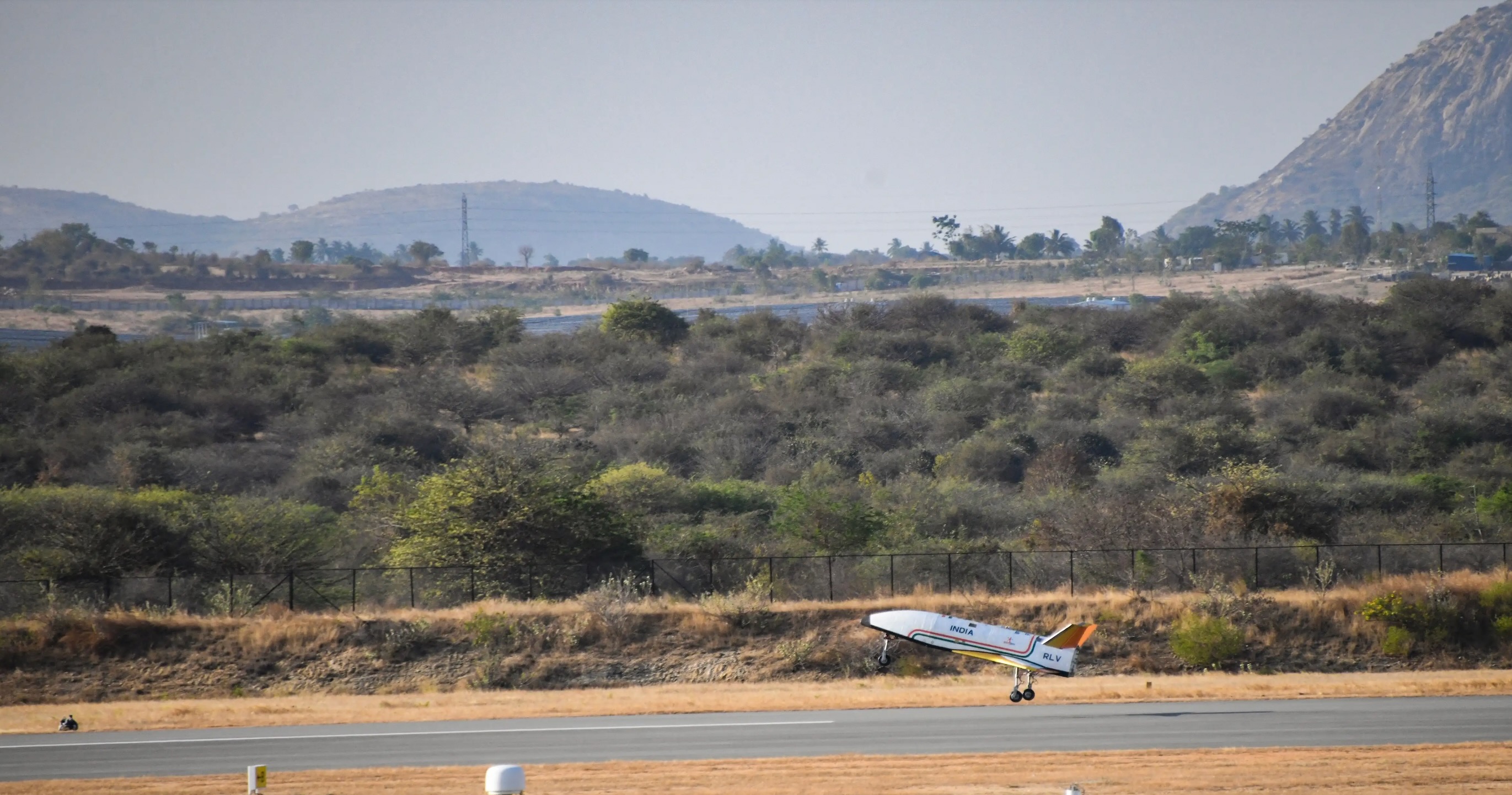India successfully lands reusable space plane prototype for 1st time (video)
India has for the first time autonomously landed its reusable space plane prototype, marking a major milestone in the country's pursuit of low-cost access to space.
On Sunday (April 2), the Indian Space Research Organisation (ISRO), India’s national space agency, announced that it had completed the second of four experiments designed to get its robotic Reusable Launch Vehicle (RLV) space-ready.
The latest experiment — Reusable Launch Vehicle Autonomous Landing Mission (RLV LEX) — was carried out in a test facility owned by the country’s Defence Research and Development Organisation (DRDO) in Karnataka, a state in southern India. As part of the mission, the 21-foot-long (6.5 meters) space plane was airlifted by a Chinook helicopter, flown by the Indian Air Force, to an altitude of 2.8 miles (4.5 kilometers) and released mid-air at 7:10 am local Indian time (0140 GMT; 9:40 pm EST on April 1).
Then, the space plane, a miniature vehicle that is still being developed, demonstrated its ability to perform a series of approach and landing maneuvers that helped it touch down safely 30 minutes later, at 7:40 am local time in India (0210 GMT; 10:10 pm EST on April 1) on the runway operated by the same test facility.
Related: ISRO: The Indian Space Research Organisation
Reaching for the stars, together with @isroThe IAF's trial team which participated in today's successful Reusable Launch Vehicle Autonomous Landing Mission (RLV LEX) at Chitradurga was headed by an #IAF woman officer who is a Flight Test Engineer at ASTE.#NaariShakti@IAFTPS pic.twitter.com/WE7cDrvI2MApril 2, 2023
"With LEX, the dream of an Indian Reusable Launch Vehicle arrives one step closer to reality," the agency said in a statement, adding that it set a record by using a helicopter to lift a winged body 2.8 miles high.
The conditions assessed in this test, like the space plane's high landing speed of 217 mph (350 kph), are similar to what a launch vehicle re-entering Earth's atmosphere from outer space would experience, ISRO said in the same statement.
Breaking space news, the latest updates on rocket launches, skywatching events and more!
This test is the second of four experiments dedicated to honing various aspects of the reusable launch vehicle. The first test, the Hypersonic Flight Experiment (HEX), was performed in May 2016. At the time, ISRO had tested the space plane prototype by launching it atop an HS9 rocket, which deposited the 1.5-ton plane into Earth’s lower atmosphere. ISRO declared that short mission a success when the plane splashed into its predetermined spot in the Bay of Bengal.
The first experiment did not test the launch vehicle’s ability to land on a runway, which became the focus of this latest mission, nearly seven years later.
ISRO began working on this landing mission in 2019 and said it built most technologies used by the space plane during the test, including the onboard navigation system and various sensors that guided the space plane to a safe touchdown.
This technology can also be adapted to the agency’s fleet of launch vehicles, which would help make their repeated use "more cost-effective," the agency said in Sunday’s update.
In January 2021, ISRO unveiled plans to build reusable rocket-launch technology before the end of this decade, which is "one of the most technologically challenging endeavors of ISRO," the agency previously said.
With the success of the second of four tests, the agency has taken another step toward realizing this goal.
Follow Sharmila Kuthunur on Twitter @Sharmilakg. Follow us on Twitter @Spacedotcom or on Facebook.

Sharmila Kuthunur is an independent space journalist based in Bengaluru, India. Her work has also appeared in Scientific American, Science, Astronomy and Live Science, among other publications. She holds a master's degree in journalism from Northeastern University in Boston.

